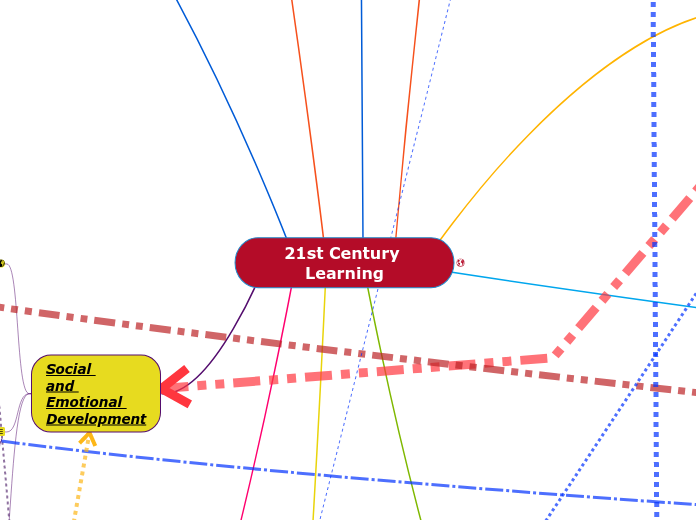More Strategies to Problem Solving
Act it out.
Look for a pattern.
Organize a list.
Draw a picture
Talk to a mentor.
Guess and check. Revise if you need to.
Explore relationships
Read the manuel/information/references. Define.
Write an equation
Mathematics
Elementary Mathematics
Contexts and Models
Addition
Properties of Addition
Identity Property of Addition on W
Associate Property of Addition on W
Closure Property of Addition on W
Commutative Property of Addition on W
Continuous
Discrte
Place Values
Place Value is the value of where the digit is in the number, such as units, tens, hundreds or further on. For example in the number 321, the place value of the 3 is in the hundreds place. It's value is 3 hundreds.
There are more place vlaues than 4 positions, however we will focus on 4 place values. The place alue title is cubes, flats, longs, and units.
cubes, flats, longs, units
b³ b² b¹ b⁰
Where as b represents the base of the place value.
Partial sums
Lattice Method
Column Addition
Add Left to right
Structure of Place Values
Subset and Proper Subset
Subset means every element of A is also an element of B. It is expressed like so: A ⊆ B.
Proper subset means every element of A is contained in B but at least one element of B is not contained in A. It is expressed like so: A ⊆ B = {1,2,3} ⊆ {1,2,3}.
Venn Diagram
Venn Diagram is a picture that relates the universe (represented by a box) and a number of subsets (represented by circles). Venn Diagram allows us to oranize the members of the universe based on common attributes.
Symbols and meanings
Subset symbols and thier meanings.
The u is the symbol used to represent the universe.
The = symbol is used to represent that one element is the same as the other. It is called equal sign.
The symbol ∈ is the symbol titled element. It represents one of the objects.
The symbol ∉ is the symbol used to denote that the object is not an element.
The symbol ~ means there is a one to one correspondent between the sets. It's title is equivalent.
The symbol ∪ is titled union. It means the set of elements which are either in A or in B or in both.
The symbol ∩ it titled intersect. It means the set that contains all those elements that A and B have in common.
The symbol with a line top of A means elements are not in set A but are in the universe.
Investigating Quantity
Sequences
A sequence is an ordered list of objects, events, or numbers which may be refered to as elements of the sequence, members of the sequence or terms of the sequence.
In mathmatics, given a sequence we desire to determine if there is a rule which governs the sequence. If we assign each member f the swquence a number (n) based on its order in the sequence we can attempt to find a rule which describes the sequence. By assigning each member of a sequence a number based on order we can refer to specific numbers of the sequence by thier number; e.g. we will refer to the 4th number of the sequence a by writing a4.
Arithmetic Sequences
Arithmetic sequences are sequences of numbers with a common defierence; that is if you subtract any two consecutive terms in the sequence the difference is the same.
-- Mathematic Class notes provided by Dr. Laura Watkins.
Geometric Sequences
Arithmetic sequences are sequences of numbers with a common ratio; that is, if you form the ratio of any two consecutive terms in the sequence the ratio is the same.
-- Mathematic Class notes provided by Dr. Laura Watkins.
Recurrence Relationship Sequences
A recurrence relationship defines a sequence in which the current term is dependent on previous term(s).
- Mathematic Class notes provided by Dr. Laura Watkins.
Problem Solving
4. Look Back and check
3. Carry out a Plan
2. Devise a Plan
1. Understand the problem
Modular Arthmetic
Number Theory
Even numbers are multiple of 2. Represented by 2n.
Odd numbers are a multiple of 2 plus one. Represented by 2n + 1.
Fact Families
Division
Traditional Method of
Column Method
Partial-Quotiuents Method
division using manipulatives
Scaffolding Method
Fractions
Ratio
Comparing two seperate things.
Quotient
Part - Whole
This is the most common understanding of fractions. Of where a whole is divided and the fraction represents the part of the whole.
Manipulatives
Cuisenaire Rods
Cuisenaire rods are manipulatives in elementary schools that work for mathematic concepts. They come in ten different lengths, each length being a different color. The length of each rods is a multiple of the length of the shortest rod. Children will sponstaneously build trains with the cuisenaire rods.
Least Common Multiple (LCM)
Least common multiple is a pair of trains that is smallest or shortest rod.
What is the relationshio between a and LCM(a,b)? It is bigger. A is less than or equal to LCM (a,b). B is less than or equal to LCM (a,b).
Greatest Common Factor (GCF)
How many different ways can one make a train using two numbers.
The colored train that is common to both numbers which has the biggest pieces. The size of that piece is the greatest common factor.
What is the relationship of the number and the GCF (a,b)? It is smaller. GCF (a,b) less than or equal to a. GCF(a,b) less than or equal to b.
To see whether
To see whether one number is a factor of another number , we can begin by making alarge train using Cuisenaire Rods of only one color.









